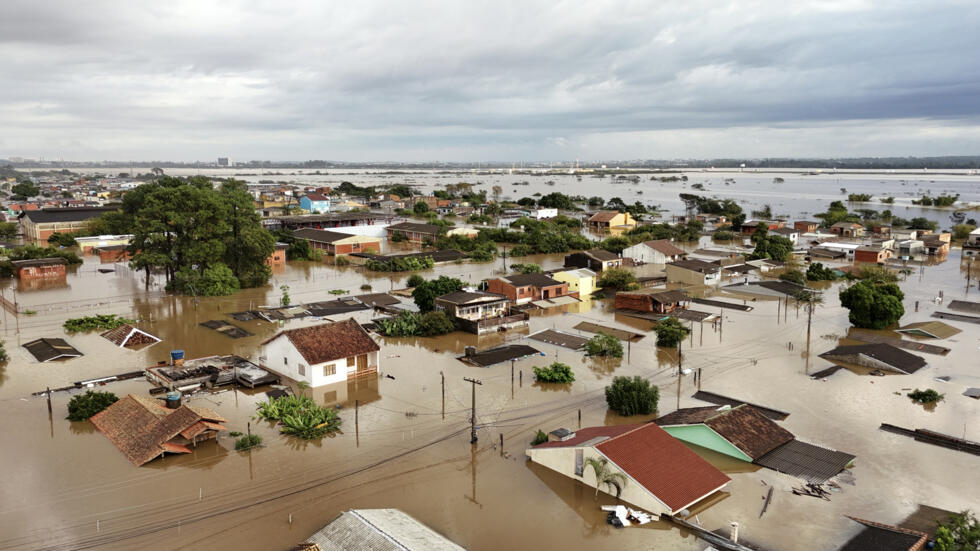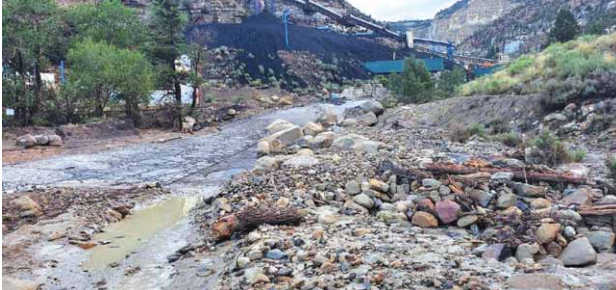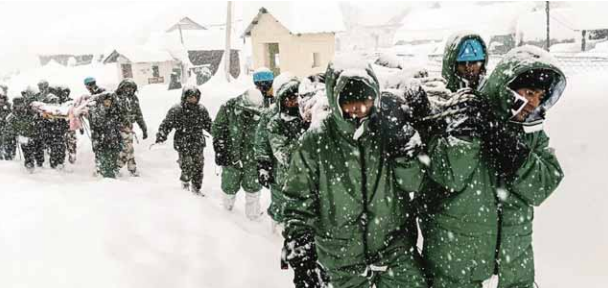The continuing El Niño weather phenomenon led to record rainfall and flooding beginning April 27, 2024 and continuing through mid-May in Rio Grande do Sul, a state in southern Brazil. Warm water in the Pacific Ocean, affected by El Niño, and very high temperatures in the South Atlantic Ocean contributed to humidity and increased the amount of rainfall. While flood waters have receded in some areas, the impacts continue,
From the end of April to mid-May, the area received rainfall three times higher than the usual year-to-date average. On May 15, Reuters reported that some parts of the state had received more than 25 inches of rain in May. Located on the Guaiba River, Porto Alegre, the state’s capital, is usually a bustling city home to 1.3 million people. The airport remains closed and will likely not reopen in 2024. Many roads remained damaged well into June, reducing access for residents to essential supplies such as food, water and gas.
Many streets flooded after the Guaíba River breached its banks in early May, reaching a high of 17.5 feet, breaking the previous record set in 1941 of 15.7 feet. While it subsided throughout late May and June, it started rising again in mid-June and is now at 10.8 feet, several inches above flood alert stage, as of June 20.
Many rivers in southern Brazil remain at one of three risk levels: attention, alert or flood (with flood being the highest) as of June 20. More rain is expected and saturated ground means rivers will continue to overtop the banks.
These stunning photo essays from The Washington Post and New York Times highlight the immense destruction caused by the flooding. Needs will be high for years to come.
One of several major flooding events in Brazil in recent years, the 2024 floods emphasize the need for early warnings for all and a better response to El Niño, La Niña, and other weather patterns and climate change impacts.
Following the floods in Brazil in 2022, Reuters reported the flooding “[underlines] a lack of urban planning in low-income neighborhoods throughout much of Brazil, where shantytowns are often built on hillsides prone to collapse. The destruction also comes as scientists begin to question whether abnormal rain cycles in Latin America’s largest nation could be a result of climate change.”
A recent paper from the Grantham Institute for Climate Change says that because there had not been severe flood events in Porto Alegre this “led to reduced investment, and maintenance of its flood protection system … This, in addition to the extreme nature of this event, contributed to the significant impacts of the flood and points to the need to objectively assess risk and strengthen flood infrastructure to be resilient to this and future, even more extreme, floods.”
The researchers also drew a link between poverty and flood protection systems. If there is not serious mitigation, they feel that the ongoing impacts of climate change will continue to “perpetuate inequalities in urban environments. Unprotected regions, typically inhabited by lower-income populations, face higher risks of flooding and associated impacts. This disparity creates a poverty trap, where those in unprotected areas are more susceptible to flood-related disasters, leading to repeated losses and hindered economic progress. Addressing these issues requires a comprehensive approach to urban planning and flood management that prioritises equitable protection and development.”
Source:
disasterphilanthropy.org
2024 Rio Grande do Sul Brazil Floods






